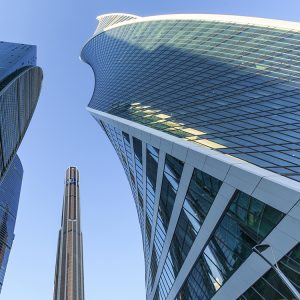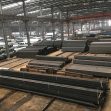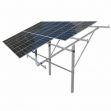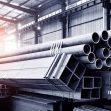Modern Building Language:Glass Curtain Wall
Glass Curtain Wall
Curtain walls, such as those on the Gold Building, are an innovation made possible by the use of interior steel construction. Steel (or in more recent buildings reinforced concrete), supports the weight of the building and exterior walls become merely a decorative barrier to the elements, applied as curtains might be to a window. Nowadays, glass curtain wall is regarded an aesthetically tasteful facade in most of commercial buildings. It is usually thin and mostly features aluminum-framed walls that contain glass infills. It does not support the roof or the weight of the walling because the framing is supposed to be attached to the building structure. Moreover, a curtain wall on the other hand enhances the beauty and value of the building. Especially a commercial storefront is the best means to advertise your company. The first impression clients get is usually from the storefront.

In practical applications, unlike window wall, which sets units of glass within the structural components of the walling, curtain wall windows are suspended over the building’s structural elements, providing cover, but no support. Because of this, each unit is longer than a window wall unit – 14 feet or higher and extends beyond the length of one floor. In addition, unlike storefront and window wall systems, which channel water across the horizontal and vertical perimeter of the installation as a whole, each unit in a curtain wall system drains individually. In that regard, curtain wall is advantageous, as it distributes water across a broader surface, which reduces wear and tear.
With regard to curtain wall elements, glazing is part of the skin of the building which allows certain elements of nature to come into the internal space. For glass curtain wall systems, there are a variety of glass glazing available in the current market, such as float glass, tinted glass, clear glass and all of them can be installed as double glazing units. Specifically speaking, float glass is the basic unit of glass; tinted glass is used to reflect some harsh sunlight, so the heat gain is minimized; clear glass is a float glass itself, but used to enhance the level of clarity from outside in. In most cases, aluminium curtain wall system is generally comprised of multiple substrates including glass glazing, aluminum framing, stainless steel components, glazing, rubber gaskets, sealant, as well as metal connections. The vision area allows light transmittance and the spandrel areas are designed to conceal the building floor beam structure and related mechanical elements. While the spandrel area is an opaque area, the architectural community always finds interesting ways to address the aesthetics by making the spandrel area pronounced or subtly blended as an all-glass facade when viewed from the exterior.
Tel: +86 18202256900 Email: steel@tjdpbd.com










